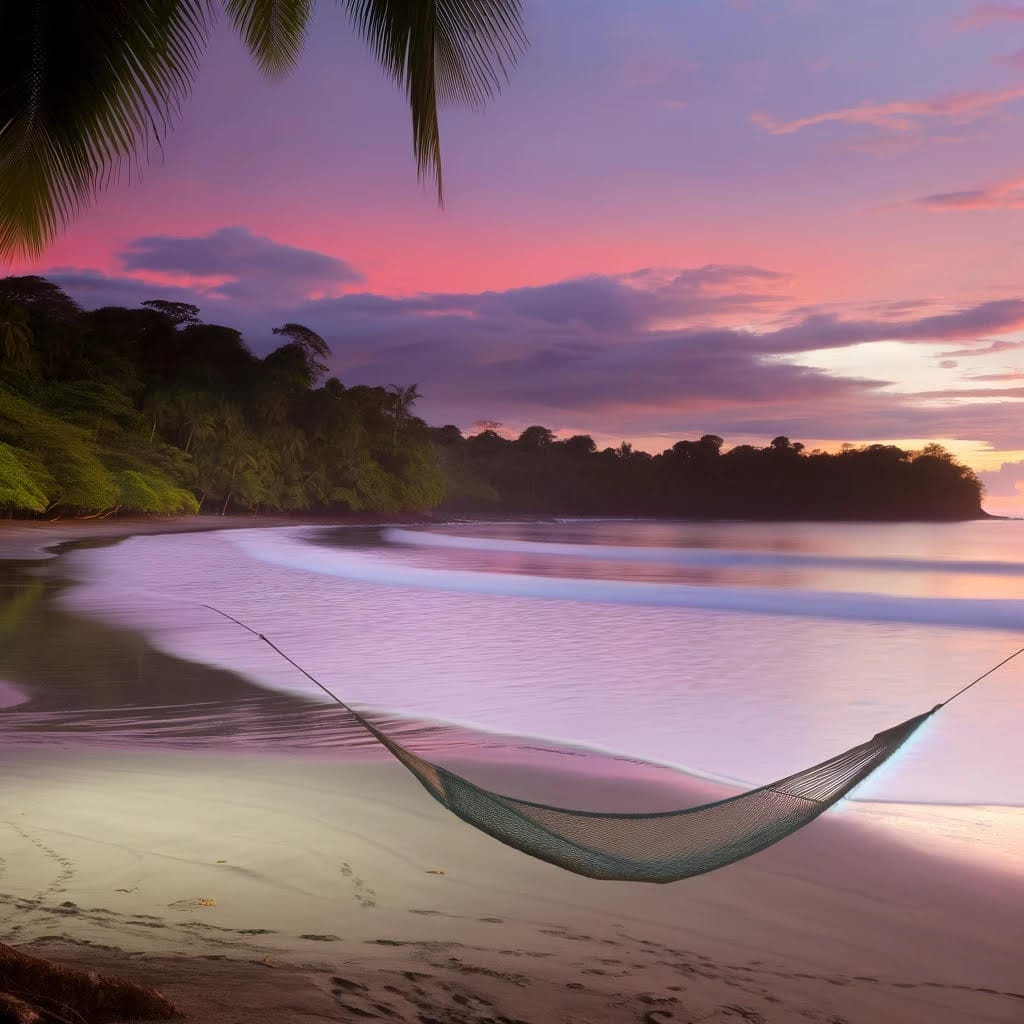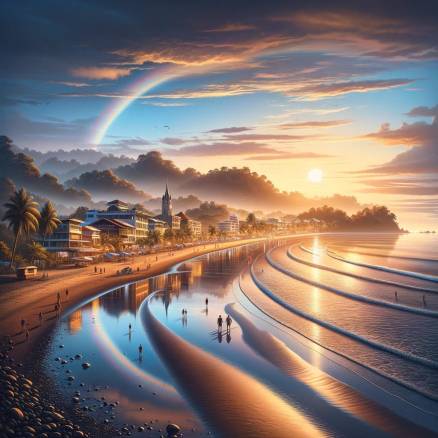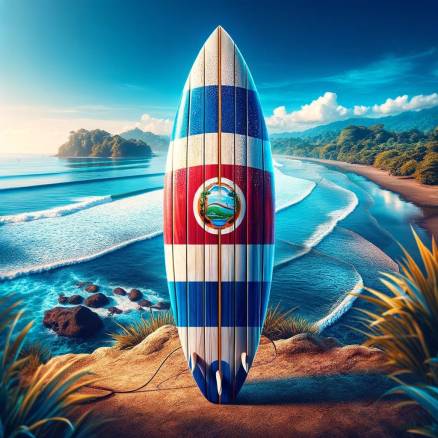The Beauty of Pavones Beach
Nestled on the southern Pacific coast of Costa Rica, Pavones Beach is a paradise for surfers and nature enthusiasts alike. Its pristine shores stretch out for miles, offering a serene escape from the hustle and bustle of everyday life. The crystal-clear waters are a mesmerizing shade of blue, inviting visitors to take a refreshing dip or try their luck at catching some of the best waves in the country.
The lush greenery that surrounds Pavones Beach adds to its allure, providing a stunning backdrop for photos and a peaceful setting for relaxation. As you stroll along the sandy shores, you’ll be treated to the sight of exotic birds, colorful flowers, and perhaps even a passing monkey or two. The tranquil atmosphere of Pavones Beach is truly a feast for the senses, making it a must-visit destination for anyone seeking beauty and tranquility in Costa Rica.
The Art of Surf Photography
Capturing the essence of surf culture through photography is a delicate craft that requires skill, patience, and a deep appreciation for the ocean. With the ever-changing conditions of the waves and the unpredictable movements of surfers, a surf photographer must be constantly alert and ready to snap the perfect shot at a moment’s notice. It’s not just about capturing the action; it’s about freezing those fleeting moments of grace and power that define the beauty of surfing.
The art of surf photography goes beyond just technical skills. It’s about understanding the rhythm of the ocean, anticipating the next wave, and immersing oneself in the energy and passion of the surfers. A successful surf photographer must be able to convey the raw emotion and adrenaline of the sport through their images, evoking a sense of excitement and freedom that is unique to the world of surfing.
Challenges of Capturing Waves
Capturing waves through photography presents a unique set of challenges for even the most seasoned photographers. The constantly changing nature of the ocean creates a dynamic environment where timing is crucial. Anticipating the perfect moment when a wave breaks just right can be a test of patience and skill.
Additionally, the unpredictable nature of waves means that photographers must be prepared to adapt quickly to changing conditions. Factors such as tides, wind, and swell direction can all influence the quality of the waves, making it essential for photographers to stay alert and ready to adjust their settings at a moment’s notice. The ever-shifting nature of the ocean means that no two waves are exactly alike, adding an element of challenge and excitement to the art of surf photography.
Best Times for Surf Photography
For surf photography enthusiasts, choosing the best times to capture the perfect wave can make all the difference in their shots. Early mornings and late afternoons are popular choices among photographers, as the soft light enhances the beauty of the waves and creates a dreamy atmosphere. The calmness of these hours also allows for clearer and more detailed shots of surfers in action.
Midday sun can often create harsh shadows and overexposed areas in photographs, making it challenging to capture the essence of surfing. However, this time of day can also present opportunities for unique shots with bold contrasts and dynamic lighting effects. By adjusting settings and angles, photographers can still achieve stunning results during these less conventional times for surf photography.
Equipment Needed for Surf Photography
When it comes to surf photography, having the right equipment is crucial to capturing those perfect moments out on the waves. One essential piece of gear is a quality waterproof camera housing that can protect your camera from water damage while still allowing you to take clear shots in the surf. Additionally, a sturdy tripod is necessary to keep your camera steady in the midst of unpredictable beach conditions.
In order to get those action-packed shots of surfers riding the waves, a telephoto lens is a must-have for surf photographers. This type of lens allows you to zoom in on the action from a distance, capturing all the intricate details of each thrilling moment. Lastly, don’t forget to invest in a reliable camera bag or backpack to keep all your gear safe and organized while you’re out exploring the beauty of the waves.
Composition Tips for Stunning Shots
As surf photography continues to evolve, mastering the art of composition is key to capturing stunning shots that resonate with viewers. One fundamental rule to keep in mind is the rule of thirds. By placing the main subject off-center, either one-third across or down the frame, you can create a visually dynamic and engaging image. This technique allows for a more balanced and interesting composition that draws the viewer’s eye across the frame.
Incorporating leading lines is another powerful composition tool in surf photography. Utilize natural elements such as waves, shorelines, or even surfboards to guide the viewer’s eyes towards the main subject of the photograph. By strategically positioning these leading lines within the frame, you can create depth and movement in your images, making them more dynamic and visually compelling. Experimenting with different angles and perspectives can also enhance the overall composition of your surf photos, giving them a unique and artistic flair.
The Impact of Lighting on Surf Photography
Understanding the impact of lighting is essential for capturing stunning surf photography. The interplay of light and shadow contributes to the overall mood and aesthetic of the image. During sunrise and sunset, the warm tones cast a soft and golden light on the waves, creating a magical and dreamy atmosphere that enhances the beauty of the surf.
In contrast, shooting under harsh midday sunlight can result in overly contrasted and shadowy photographs. Cloudy days offer a diffused light that can produce soft and evenly lit images, ideal for highlighting the details of the waves and surfers. Adapting to the changing light conditions is key to achieving dynamic and visually striking surf photography that truly captures the essence of the sport and the natural beauty of the ocean.
Editing Techniques for Surf Photos
When it comes to editing surf photos, there are several techniques that can elevate your images to the next level. One key aspect is adjusting the white balance to ensure the colors of the ocean and sky look natural and vibrant. By fine-tuning the exposure, you can bring out the details in the waves and capture the energy of the surf in your photographs.
Additionally, cropping your images can help improve the composition and focus on the most interesting elements of the scene. Pay attention to the horizon line and make sure it is straight to create a sense of balance in your photos. Experimenting with contrast and saturation can also make the textures of the waves pop and create a more dynamic and captivating image.
Famous Surf Photographers in Costa Rica
Costa Rica is home to some of the most talented surf photographers in the world. These individuals have a unique ability to capture the essence of surfing, showcasing the raw power and beauty of the waves in their photographs. Their work not only celebrates the sport of surfing but also highlights the stunning natural landscapes that make Costa Rica a haven for surfers and photographers alike.
With their keen eye for detail and unparalleled skill behind the lens, these surf photographers have created a visual legacy that continues to inspire and awe audiences around the globe. Their photos transport viewers to the heart of the action, allowing them to experience the thrill and excitement of riding the waves without ever leaving the shore. In a country known for its spectacular surf spots, these photographers play a vital role in preserving the magic and allure of Costa Rica’s coastal treasures for generations to come.
Preserving the Beauty of Costa Rica’s Waves
Preserving the beauty of Costa Rica’s waves is crucial in maintaining the delicate balance of its marine ecosystems. As surf photographers, it is our responsibility to capture the essence of these majestic waves without causing harm to the environment. By following ethical guidelines and respecting nature, we can ensure that future generations can enjoy the pristine beauty of Costa Rica’s coastline.
One way to contribute to the preservation of Costa Rica’s waves is by minimizing our environmental impact while photographing. This includes practicing Leave No Trace principles, refraining from disturbing wildlife, and avoiding trampling on sensitive habitats. By treading lightly and being conscious of our surroundings, we can help protect the natural beauty that makes Costa Rica a paradise for surfers and photographers alike.
What makes Pavones Beach so special for surf photography?
Pavones Beach is known for having some of the longest left-hand waves in the world, making it a perfect spot for capturing the beauty of surfing.
What are some challenges that surf photographers face when trying to capture waves?
Some challenges include unpredictable weather conditions, changing tides, and getting the right timing to capture the perfect wave.
When is the best time of day to take surf photos?
The best times for surf photography are usually during the early morning or late afternoon when the lighting is soft and creates beautiful reflections on the water.
What equipment is essential for surf photography?
Essential equipment includes a high-quality camera, waterproof housing, a telephoto lens for capturing action shots, and a sturdy tripod for stability.
How can I improve the composition of my surf photos?
To improve composition, try to focus on capturing the surfer in action, use leading lines to draw the viewer’s eye, and experiment with different angles and perspectives.
What role does lighting play in surf photography?
Lighting is crucial in surf photography as it can enhance the colors of the waves, create shadows for depth, and highlight the details of the surfers.
Are there any famous surf photographers in Costa Rica?
Yes, Costa Rica is home to talented surf photographers like Carlos Brenes, Alvaro Solano, and Esteban Delgado who have captured stunning images of the country’s waves.
How can we help preserve the beauty of Costa Rica’s waves?
To preserve the beauty of Costa Rica’s waves, it is important to practice sustainable photography techniques, respect the environment, and support local conservation efforts.




